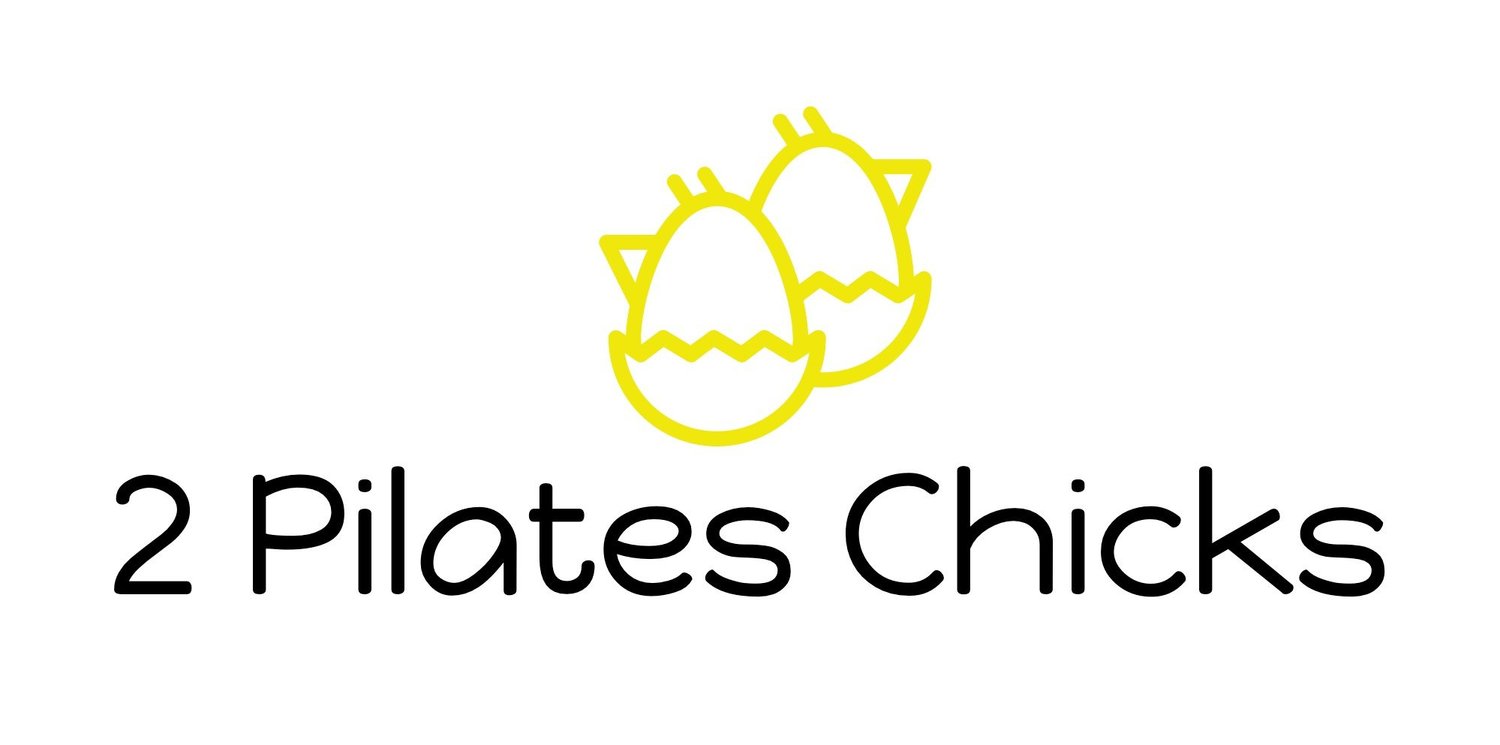Approaching difficult topics with Pilates clients
How do you approach difficult topics with Pilates clients? What do you say to a client who is constantly canceling last minute? How do you talk to your clients about policies you have set up for your business and how do you enforce those boundaries?
In our season 5 episode 1 podcast, “Difficult Conversations with Clients”, we dive into how to approach challenging conversations in various scenarios.
Every client-based business where a professional works one-on-one with a client has to deal with confronting clients' problematic behavior. It can be a challenge to navigate the relationship when issues arise. This is a constant aspect throughout a career, especially in close settings such as teaching Pilates. Even as we develop close professional relationships with clients, we must maintain boundaries to take care of ourselves as well as enforce studio and business policies when clients are pushing those boundaries.
When a client's behavior continues to negatively impact the teacher, the studio, and their sessions, we have to approach them to address the behavior. Often, a client may not even be aware that a specific behavior is problematic and simply bringing it to their attention can help solve the issue. Other times, it can be more of a challenge. It never gets easier, but with more experience, we can become more confident over time in the ability to speak to clients about our expectations in the studio and business settings.
Some common issues that Pilates teachers encounter throughout a career include:
• Enforcement of business hours
• Preparation time between sessions
• Habits with scheduling
• Negotiating prices of sessions
• Refusing to listen to the teacher
We each will experience variations of the above scenarios throughout our careers. Every situation is different depending on the teacher and the client, but it is common to come across these problems.
Enforcement of Business Hours
For Pilates teachers who work one-on-one with clients, our clients need to contact us to schedule and re-schedule sessions, ask questions, and connect. We often have close relationships with our clients especially if we've been teaching them for many years. For teachers who handle their client books and don’t have a front desk manager to schedule sessions during business hours, we must enforce our hours of operation. It is now common practice for clients to reach out via email or phone via call or text messages to our cell phones. It makes it easier to schedule especially when we're not in the studio, but since we all tend to have our phones with us at all hours these days, it can be a challenge to separate from work and client inquiries.
Since we continue working even when we're not actively in the studio to schedule clients and session plans, and since clients can contact us at all hours of the day, we have to set our business hours. Depending on what works for each of us, we recommend picking "bookend" hours of the day in which we will not respond to messages before that hour, and we will not respond after that hour. If it's 8:00a-5:00p, then we don't answer texts or emails from clients before 8 am or after 5 pm, and we will leave the message unanswered until our business hours for the next day. It is an important business practice to follow up with clients and respond to messages within 24 hours, but we must do so at an appropriate time of day.
Clients may text at 10:00p, but they likely aren't expecting an immediate response. They generally aren't being rude or trying to intrude, they are simply sending a message when they think of it, and we can respond when it works for us. But it's up to us to set our hours and stick to them or clients will continue to expect answers at inappropriate and frustrating times.
Preparation Time Between Sessions
Clients rarely show up exactly on time. Often they will come early or late for sessions and may ask or expect to be able to start early or stay late. However, the time we have scheduled for the client is their slot, and the time beforehand is our time to clean up from the previous session, prepare for the next session, and have a moment for ourselves. If a client comes early and wants to start early, we can professionally say "I'll be with you in a few minutes, please take a seat for a few minutes".
Similarly, when clients come late and ask if there is someone after them, expecting to be able to still have their full session time, we can choose how to answer and say "I do have a commitment after your session today". If we don't have a client immediately afterward and they notice no one coming in after them, we can always say that they're running late. Whatever response works for any individual teacher is fine to maintain our professional boundaries. When a client tries to push these boundaries they tend to continue to try to do so, and for that reason, we recommend maintaining that session time limit.
Habits with Scheduling
Clients constantly canceling recurring sessions or rescheduling is the most common and constant issue for all Pilates teachers. Every teacher and studio has a cancellation and no-show policy where a client canceling within a specified window of time will be required to pay for the session in full even if they don't attend the session, even if they have a really good excuse. The client who always has a reason for late canceling still must be held accountable. However, it can be tricky when a client cancels 25 hours or 23 hours before a session with a 24-hour cancellation policy, or if they often ask to reschedule their time for a different day expecting not to be charged.
When a client continues to hold a slot that they rarely attend, whether or not they reschedule for another time in the week, we're not able to fill that slot. The teacher loses income for that session, and clients who are waiting for time are not able to get in. This can become frustrating for the teacher and other clients. It is important to remember that it is our time that the client is reserving, it is not the client's slot to continue to hold.
For the client who constantly cancels or reschedules, we can offer the option of scheduling weekly instead of having a recurring slot. A great way to approach this is by saying "It seems like this time doesn't work for you, why don't we schedule weekly so you don't have to worry about canceling". This can be done in person or in writing an email or text. If they say they want to keep it, then we can be more direct either by showing them the number of sessions they've missed, or saying that they can't remain in the slot if they continue to cancel. Another great option is to choose a longer cancellation window of 36 or 48 hours for all clients to have more time to reschedule clients and reach out to the waitlist when someone cancels.
This is a continuous issue throughout a Pilates teacher's career, and it can become quite frustrating and can even feel disrespectful. Most clients aren't intentionally being rude, but they likely aren't in a client-based profession. They're just living their lives and don't think about how we have many other people to accommodate as well, which is why sometimes simply stating that to a client can help them realize how often they're late canceling and how it impacts our business.
It is important to stay strict with scheduling policies to eliminate these bad habits which is only fair for our business and other clients. A New Year reminder email of studio policies can be very helpful to reset everyone's expectations at the beginning of the year. A message restating the policies clearly and in writing along with any new updates can be very effective at bringing these issues to everyone's attention, and can then be referenced if it continues to be a problem later on in the year.
Negotiations of Session Pricing
Discussing money is a challenging topic in any situation, and it can be uncomfortable to enforce prices, especially for newer teachers. We're essentially saying "This is what my time is worth", and we must be confident in that. The price of a session is not only for our time but also for our experience and expertise. We additionally have business expenses such as rent, utility costs, business licenses, liability insurance, and continuing education.
When a client asks for a discount or tries to negotiate the price of their session it can seem very disrespectful as it feels like they are discrediting our expertise and our work. We recommend never giving in to a price discussion, and never offering a discount or a free session, especially for a new client for a "starting deal". It is difficult to stand our ground when someone is requesting a discount. Instead, to reward returning clients, consider offering a gift session with the purchase of a larger package of sessions, but never call it a free session as that discredits its value.
It doesn’t matter if we are teaching in a home studio, virtually, or in a commercial studio space with other teachers. Our expertise, time, and continued education hours that we put in each year to keep clients safe and appropriately guided through sessions are worth the price we charge. Never give in to someone negotiating the session cost. Don't be afraid to lose a client if they think it's too expensive, as they likely won't end up being a respectful client to work with in the long run, and will likely push against other business policies as well.
Refusing to Listen to the Teacher
Some clients push back against what their teacher is guiding, either refusing to do certain exercises, requesting specific exercises, or dictating how they want to do an exercise. Each of these situations requires teachers to stay calm and try to find out why a client feels a certain way. When a client has hesitation with an exercise, doesn't want to do it, or wants to do it a certain way, we need to ask why. Finding out why is key to figuring out if they are scared, in pain, simply don't like it, or are unsure and feel like they will fail. Depending on the reason we can approach the conversation differently.
Being open to the client's experience and asking a few questions to try to understand can help move forward in this situation instead of both client and teacher feeling negative, with the client being forced to do an exercise in a way that doesn't work for them, and the teacher is annoyed at the client not wanting to listen to them.
Sometimes we can just say ok, and let them do the version they prefer, guiding them through that version. If they have pain or an injury we can work through it with them to figure out a variation that's more appropriate for their needs. If we know the movement is safe for them and they’re just a difficult personality, we can hide the movement within another exercise in a different way. We can say, "Well how about this today?"
It's ok to just go with the exercise the client wants to do or if they start to do a different variation misunderstanding the direction we were giving. The exercise might be right for them for some reason that day. It might not have been what we were planning but it's ok as long as it's safe for them. Sometimes we can let go of our ego to work with the client and follow what their body decides since we're guiding, not dictating.
However, if we're doing our best to accommodate a client in their sessions, teaching to their individual needs, and appropriately managing their injuries and physical history, and yet a client continues to battle against what we're asking, it's time to sit down with them and clearly state that if they want to continue sessions with us that they need to listen.
What happens when the situation still doesn't improve after approaching these conversations?
Setting boundaries with clients and maintaining them is challenging. It can be difficult to stay grounded and confident in these moments of confrontation. For more experienced teachers, it can be a bit easier to approach these conversations, but there are always difficult and uncomfortable moments.
Boundaries get pushed all the time and it is a constant occurrence we must deal with in different capacities over the years. When we've made the effort to have these conversations to confront an issue and the client continues to ignore our policies it might be time to release the client. Sometimes certain personalities simply don't work together, and while there is a teacher for every client, not every client is right for every teacher.
Depending on the specific personality of the problematic client, we can choose to sit down and have an in-person conversation, send an email, or have a phone call. Any of these methods is appropriate if it feels right for the situation. We can tell the client that our schedule has changed and we can no longer offer that time slot, or we can be very honest and say because of this behavior I don't feel that I can continue offering my services, or due to this situation unless this changes we can no longer continue working together.
There are situations where the client wants to continue working with us and makes the appropriate adjustments. In other situations, they do not. Either outcome is appropriate if the teacher can feel more comfortable in their work.
Overall, every teacher will have to deal with challenging client situations at some point and will need to determine the best approach for these difficult conversations. Each situation is different, and different clients may need different approaches. If we're not comfortable discussing this in person, it is perfectly acceptable to do so over the phone or in writing via email or text. By maintaining our boundaries and reminding clients of our studio and business policies, we create a healthier studio atmosphere, and we can feel more comfortable in our daily schedules at work.






